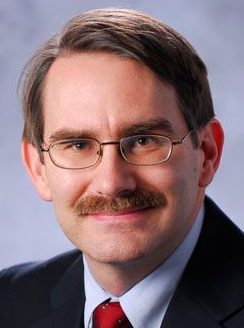Greg Wilson/Anderson Observer
Every year, Americans pause this time of year to celebrate the country’s delcared independence from the British Empire. The Founding Fathers saw an opportunity to form a new nation, and took it, and the world is a better place as a result.
In doing so, they set in motion the world’s most enduring political system, a democratic republic with safeguards in place to protect people from the government and the government from the worst instincts of its citizens.
safeguards in place to protect people from the government and the government from the worst instincts of its citizens.
The Constitution of the United States and Declaration of Independence are two of the most significant political documents in world history, setting into laws an array of freedoms no other civilization had experienced and becoming a template for freedom everywhere.
What makes those who drafted this documents even wiser, is they quickly recognized the Constitution was a living document, and required refinement to clarify and correct the original intent. Thomas Jefferson said he thought it should be updated every 19 years, although no solid historical reason seems to have been found for this number.
The First Amendment, which appeared in 1891, less than four years after the original document, offers a list of freedoms most associated with being an American, though indigenous people and blacks were not invited to the freedom party.
Many of the freedoms spelled out in this amendment, though, now include these groups. They are also the subject of much debate even today.
The first listed is the right to be free from the government establishment of religion as well as free from governmental influence from the practice of religion. This has led to discussions on topics ranging from prayer in schools to bible classes in public schools to the teaching of evolution in science classrooms. But at its heart, it means we are all free to worship in any manner our spirit desires, including the decision to pursue no religion at all. Deism, which included human reason, was the most the most influential faith for Washington, Jefferson, Franklin, Madison and Monroe, and its driving philosophy is evident in both the Constitution and the Declaration of Independence.
While the Puritans left England for these shores seeking religious freedom, they did not extend that freedom to those who did not agree with their own dogma. The most famous dissidents within the Puritan community, Roger Williams and Anne Hutchinson, were banished following disagreements over theology and policy. From Puritan Boston’s earliest days, Catholics (called “Papists”) were banned from the colonies, along with other non-Puritans. Four Quakers were hanged in Boston between 1659-1661 for persistently returning to the city to stand up for their beliefs.
So the Founding Fathers sought to erase the patchwork of religious laws and restrictions in favor of free practice of faith. The success has been profound, but not without the ever present politization of faith in politics, with candidates who have little or no personal connection to faith suddenly becoming evangelical during election cycles. This is both and example of religious freedom and a sad commentary on religion in America. But as long as those fervent speeches do not include policies to restrict the faiths of those who disagree with them, freedom remains.
The right to free speech, something that is often misunderstood and wrongly attacked, holds the rest of our freedoms together. It includes our right not to speak, the right to engage in symbolic speech (even when unpopular, e.g. the burning of the flag in protest), and the right to say most anything that does not incite actions that lead to harm to others.
While you cannot, and should not, shout fire in a crowded theater when there is no fire, you can picket in front of a theater that has violated fire codes and thus perceive as dangerous.
You can state political viewpoints, no matter how unpopular, which, again, are not aimed at inciting actions to harm others.
And this freedom can also include consequences. While I may not believe the heated opinions of my fellow citizens, I respect his/her right to issue such speech. Meanwhile, I also reserve the right to disagree, and in some cases, choose to do business or not do business with the person with whom I disagree. If I am employed by a company that imports wool, and I become and anti-wool organizer, I can expect both to express my freedom of speech while my employer excersizes the freedom to relieve me of my job.
This has been lost on many, that this amendment is in reference to governmental regulation of speech, and not any consquences which may result in such expression. The debate over access to social media offers a good example.
The same political movement that killed the “Fairness Doctrine” (a policy that required the holders of broadcast licenses both to present controversial issues of public importance and to do so in a manner that was honest, equitable, and balanced, presenting both sides). The FCC eliminated the policy in 1987, during the Reagan administration, with Republicans at the time hailing it as a victory for free speech. Now the same group, and others, are wanting to impose what is essentially the Fairness Doctrine requirements on social media platforms. Either revive the “Fairness Doctrine,” a sound idea, or stop the complaining about a standard they put in motion 40 years ago now that it no longer suits some narrow political purposes.
Governmental intervention on free speech, including social media, is likely to be more damaging than the problem some perceive needs to be solved. If there are companies with enough power and influence to allegedly infringe on freedom of speech, how is it prudent to propose the federal government - which is a much more powerful and influential entity - jump into this space?
The political pendulum has historically been one that swings toward self correction. To set new restrictions on free speech as it related to privately owned social media to achieve some short-term political agenda is terrifying.
Allowing new governmental rules on Facebook and Twitter could easily lead to government overreach of all free speech, and result in future restricting of any opinion that runs counter to whatever current political winds are blowing.
This leads naturally to the guaranteed right to the freedom of the press. A glance at last week’s headlines, where China shut down the only newspaper the supported democracy in Hong Kong, is a good example of how quickly such freedom can be lost. Governments which have sought to shut down or control the media include those led by Hitler, Stalin and today include North Korea, China, Iran, Syria, Cuba, Laos and Saudi Arabia, just to name a few.
With all the excesses, especially in broadcast media where many cable networks are little more than partisan infomercials, in the modern era where vetting journalist sources is sometimes more challenging a free press is more important than ever. Without the Fourth Estate, who is left to hold local, state and national government accountable and accessible to citizens. Journalists also are charged with the responsibility to shed light on corporations and other powerful entities when they are seeking to work against the nation's interests without accountability. It was journalists who reported on the unsanitary conditions and unscrupulous practices rampant in the meatpacking industry, which was killing Americans and the snake oil salesmen who promised all manner of miracle cures, that led to the 1906 Pure Food and Drug Act and later gave birth to the Food and Drug Administration.
Such works has been a hallmark of American journalists history and should be recounted in our textbooks. Remember The Pentagon Papers? It was journalists who exposed government knowledge that the war would cost more lives than the public had been told and revealed that the presidential administrations of Harry Truman, Dwight D. Eisenhower, John F. Kennedy and Lyndon B. Johnson all had misled the public about the degree of U.S. involvement in Vietnam.
Such work is crucial to democracy.
Journalists working in many countries around the world are jailed, tortured or killed for seeking to hold their governments accountable. Our Founding Fathers were visionary in providing laws to prevents such things from happening in America. It’s foolhardy to take such a freedom for granted.
The First Amendment also provides the right to assemble peacefully, with whomever one chooses, and petition the government to redress grievances.
Freedom of assembly ensures people can gather and meet, both publicly and privately to advocate for change raise awareness about the issues that matter, for such issues as human rights or socio-economic rights.
States have often aggressively attempted to circumvent this right, through seeking to criminalize the organizers or participants in peaceful protests. Often intimidation has been used in an attempt to engender self censorship. Such violations of the Constitution never end well for those seeking to limit this freedom, no matter how uncomfortable or inconvenient some localities might find it.
The Civil Rights marches, which are a shining example of such assembly from the last century, made America a better place for all Americans. As viscously as some states sought to deny their constitutional rights, these brave men and women perservered to exemplifythe spirit of our forefathers' vision for a country marked by such freedom.
So, on our nation’s 245th birthday, as we celebrate we do well to remember what freedoms on which our nation was constructed and continue to be protected our protections of religion, speech, the press, assembly and petition, all the while being alert to any attempt by any government, local, state or national, which seeks to curtail these principles.
 Tuesday, August 24, 2021 at 6:14AM
Tuesday, August 24, 2021 at 6:14AM  Editor |
Editor |  Post a Comment |
Post a Comment | 




